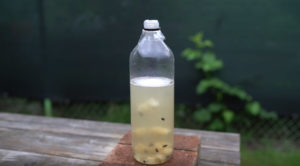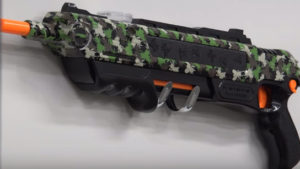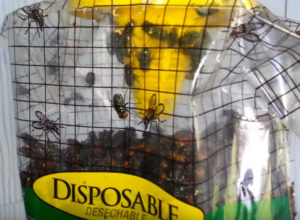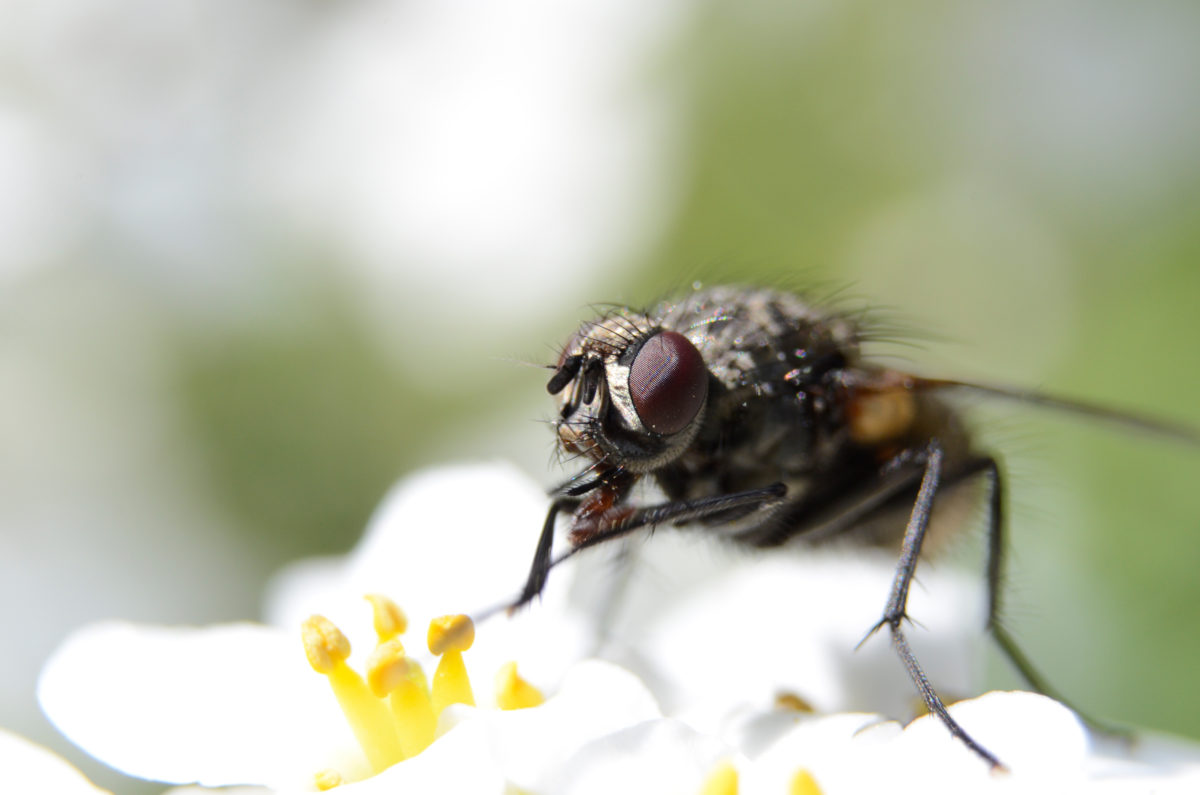Outdoor and Indoor Fly Trap
You would think an Indoor Fly Trap and an outdoor fly trap would function quite similarly. On the contrary, there are vast differences between the two. There are many reasons why one is best suited for indoors and one is best suited for outdoors. A general thing to keep in mind is that an indoor fly trap is usually always slower and more passive than an outdoor fly trap. Outdoor traps have attractants in them and actively try to attract flies. Indoor traps are usually passive and don’t necessarily try to attract bugs as much as to not cause a stench.
Oftentimes, outdoor fly traps are more potent in killing flies than indoor ones. This is true to both fly trapping devices and insecticides. Even pest control experts know which chemicals to use for indoors and outdoors. This article provides an in-depth explanation of the differences between indoor and outdoor fly traps and which one is more optimal to use in specific environments.
Indoor Fly Trap Purposes
 An indoor fly trap usually uses a way of attracting flies that does not impede on the standard quality of life in a common house. Using strong smells or odors is not very common when it comes to indoor fly traps. While sticky tape by itself can work, eventually you’ll have strands of flies all over your house and it does not make for an impressive decoration. Sticky tapes are still considered as effective fly traps. A single sheet can trap hundreds of flies in a few hours.
An indoor fly trap usually uses a way of attracting flies that does not impede on the standard quality of life in a common house. Using strong smells or odors is not very common when it comes to indoor fly traps. While sticky tape by itself can work, eventually you’ll have strands of flies all over your house and it does not make for an impressive decoration. Sticky tapes are still considered as effective fly traps. A single sheet can trap hundreds of flies in a few hours.
For small homes, you will only need a single sheet in every major area in the property. Putting the sticky tapes right beside windows is the most recommended way of using them. The best thing about this product is that it can be used without any hassle. Just leave it at a strategic place and all you have to do is wait until sunset. The only downside to such a product is its aesthetics. Your guests would not definitely love the sight of them when they see one in your house. An alternative is using a homemade DIY trap using apple cider vinegar. You can find homemade fly trap ideas here.
Homemade DIY Traps
A homemade DIY trap is more effective at killing or repelling flies. There are many solutions to creating a homemade fly trap and you should find the most suitable one for your home. There are some homemade fly traps that are not meant for killing flies but only repelling them. Nonetheless, all homemade fly traps are considered safe to use since their main ingredients are always natural If we’re talking about an indoor fly trap, we’re most likely talking about something that is trying to capture a large number of flies in a small span of time indoors. Truth be told, fly traps aren’t usually ideal for indoors.
At the same time, the bait’s smell coupled with the stench of possibly thousands of dead flies can lead to a nasty combination. The most common type of indoor trap is a wall hanger which has a UV light and uses sticky paper to catch flies. UV light very rarely outperforms foul-smelling bait when it comes to flies. These are slower and require a bit of maintenance to constantly check the sticky paper.
Fly traps that use UV light are also used outside to lure bugs away from areas of enjoyment (such as a patio) at night since that’s when UV light really tends to shine. These outdoor traps usually attract mosquitoes and gnats, not so much flies. The trap kills bugs by shocking them with an electric current. These do require an outlet in order to function. Indoor fly traps are generally safer to use since they do not include harmful chemicals with them.
However, their effectiveness in killing flies is not as effective as those found outdoors. Indoor fly traps could also include devices that use odor to attract flies. The smell of rotten fruit and meat can attract hundreds of flies in just a short span of time. Once the flies enter the trap, they will no longer be able to get out, leaving them good for dead after some time. Indoor fly trap devices are smaller in size in comparison to those used outdoors. They are very convenient to use but you will have to clean them every after use.
Indoor Sonic Repellents
Another “trap” (put in quotes because technically this is a repellent and less of a trap) is an ultrasonic emitter. These usual channel frequencies that most pests can hear and deters them from being in your home. Be careful when buying these though, a minority of the time they’re a scam. Ultrasonic emitters have been proven to work, so that’s not always entirely the case.
If an ultrasonic emitter is being sold by a company outside of your country, it’s best to steer clear and buy domestically or, better yet, buy it at a store you know you can return it to. A good way to figure out if you’ve purchased a defect or scam product is if it emits a sound loud enough to hear it or you notice it’s on and you don’t notice a difference in the presence of pests.
Fly Killer Guns

In the past few years, there has been a new development in fly killing technology. With the new BUG-A-SALTs and electric fly swatters, it’s hard to tell which will work where. First off, currently there are two modern BUG-A-SALT models: 2.0 and Lawn & Garden Edition, and here I compare and contrast the two in a high amount of detail. But, basically, all you need to know is that if you don’t mind having to clean up larger amounts of salt inside, just get the Lawn & Garden Edition.
But if you’d rather have less to clean up inside, buy the BUG-A-SALT 2.0 for inside use and the Lawn & Garden Edition for outside use. If you’d rather take the electrical route, then an electric fly swatter is the way to go. Electric fly swatters are good for when your target is flying through the air.
While the BUG-A-SALT can do this, it’s much easier to hit a flying target with an electric fly swatter than it is with the BUG-A-SALT. The inverse is also true. It’s easier to hit a non-moving target with the BUG-A-SALT than it is with an electric fly swatter. And this is dependent on where the target is.
Outdoor Fly Trap Purposes
The purpose of an outdoor fly trap is to catch a high quantity of flies as quickly as possible. To achieve this, outdoor traps are actually to attract flies from over large distances. This is done by using a highly foul-smelling attractant to attract the flies. Then an entryway is present in such a way that the fly cannot escape.
The smell from the trap, in the beginning, is already bad. And coupled with around 20,000 dead fly corpses, and the smell gets even worse.
This stench can embed itself in both skin and clothing. This is primarily the reason why outdoor fly traps use bait, as it attracts large amounts of flies in a large range. The smell itself (at least of this product) is that of dried partly rotten egg solids. When water mixes with the attractant material, it re-hydrates the egg solids.
Consequently, activates the smell causing a nasty odour that’s hard to ignore. This is why most outdoor traps make it abundantly clear not to handle the traps inside your house. Other outdoor fly killing products include insecticide sprays. There are already many insect sprays that can be bought in the market. However, some of them contain very strong chemicals that can be dangerous when used indoors.
The main objective of using outdoor fly traps and sprays is to exterminate flies from their source. Flies can breed at almost any environment for as long as food sources are available nearby. Locating their breeding areas is the best way of exterminating them permanently.
Tips On Managing Outdoor Fly Traps

There are mixed reports of people saying the smell is clearly abundant. Plus, others, saying you only get wafts of it every now and again.
Either way, a general rule of thumb is to place these farther from your house.
Another reason to do this is that these traps attract flies. This doesn’t mean it catches all the flies it attracts. It attracts a large number of flies. And traps as many as it will allow.
Sometimes the dead flies filling the bag will bring more flies. Traps with a strong odor should only be applicable if you have an incredibly bad fly infestation. Then, the flies will come with or without the trap.
The same holds true for light traps as they will attract gnats and mosquitoes at night. Again, only use a trap with attractant if the insects will be there with or without the trap.
In Conclusion
An indoor fly trap is useful when using a UV light in a dark area or during darker hours. Traps that use fans around UV lights are more effective than ones without. Never use a smell trap indoors.




